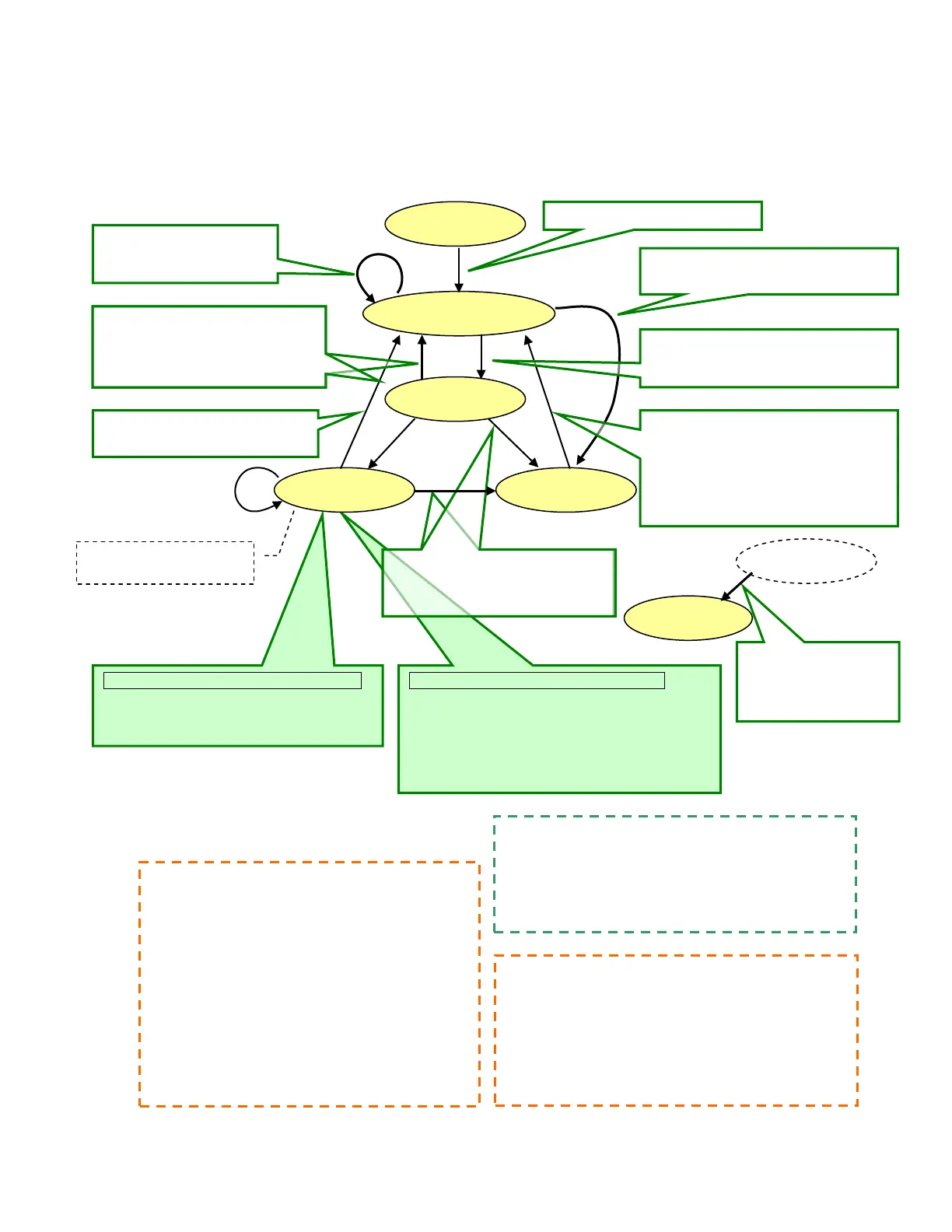5. Dual Function
71
State Transition Diagram
Condition for starting to backup parent nodes
Talkers of parent nodes aren’t used and one of the
following states is occurred.
- The state of Parent node is STANDBY or DOWN.
- All Talker blocks of parent node is unhealthy.
- TC-net Card of parent node is Error.
- OPC Server of parent node is unhealthy
Self TC-net Card Normal and
Other Nodes don’t use talker of self node.
OPC Server have started.
The following either states occurred.
- Self TC-net Card Error
- Client Application Normal and Other
Nodes don’t use talker of self node
- Self TC-net Scan stop
- Self TC-net Removed Ring
Self TC-net Card Error or
TC-net Type Error
Condition for finishing to backup parent nodes
- The state of parent node is PRE_ONLINE,
ONLINE or BACKUP.
- Other Nodes are using talker of parent nodes.
All Parent Nodes became
PRE_ONLINE, ONLINE or BACKUP
Self TC-net Card Normal and
Other Nodes are using talker of self node
*1:"Other Nodes are (not) using talker of self node"
means that it is resulted from checking talker blocks
registered in self node and not from checking them of
parent nodes backed up.
*2:"Other Nodes are (not) using talker of parent nodes"
means that it is resulted from checking talker blocks of
parent node which is or will be backed up.
*3: When the state is STANBY and "Other Nodes don't
use talker of self node", "Child Node is backing up self
node" means that talkers isn't be used. After the state
of self node becomes to be normal, it will move to
PRE-ONLINE.
Including the condition this
has several Parent Nodes.
*4: Just after the state has changed, this doesn't detect the
duplicate talkers. The
refore if talker is used in other node
at that time, the state of self node doesn't immediately
move from ORE-ONLINE to STANDBY.
*5: For the self node, it is included in "Self TC-net Card
Error" that the dual diagnosis counter for network of
TC-net has no change.
Self TC-net Card Normal and
“Other Nodes are using talker of self
node or Client Application Error.”
The following either states occurred.
- Self TC-net Card Error
- Self TC-net Scan stop
- Self TC-net Removed Ring
DOWN
Shut down request from
the OS or the Unhealthy
server
Other States
INIT : Initializing
PRE-ONLINE : Wait for online (The talker is none.)
ONLINE : Reading scan data. The talker is only own node's.
STANDBY : Reading scan data. The talker is none.
BACKUP : Reading scan data. The talkers are own node's and
parent node's.
DOWN : Node down

